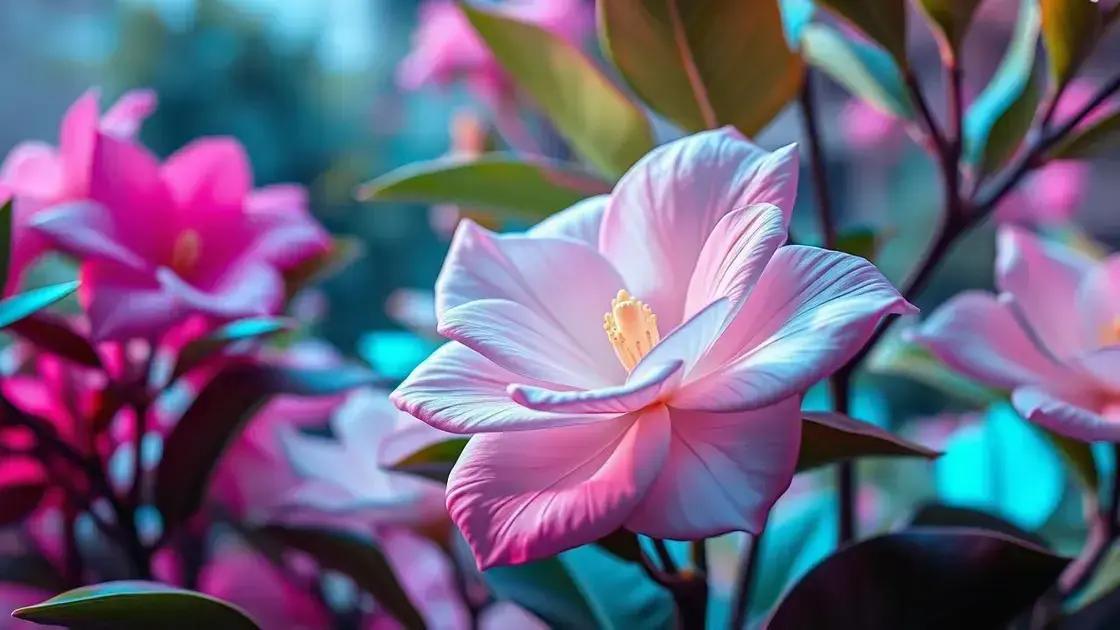How to Care for Gardenia Plant: 7 Essential Tips for Thriving Blooms
How to care for gardenia plant is a common question among plant enthusiasts. These fragrant beauties are prized for their stunning white flowers and rich scent. However, their care can sometimes be tricky, requiring specific attention to their environment and maintenance. Let’s explore vital aspects like proper sunlight, soil mix, and pest management to help your gardenia flourish.
Table of Contents
ToggleUnderstanding sunlight exposure for gardenias
Understanding sunlight exposure for gardenias is crucial for their growth and blooming. Gardenias thrive best in bright, indirect sunlight, which mimics their native habitat. Here’s how you can ensure they receive the right amount:
Ideal sunlight conditions for gardenias
- Provide 4 to 6 hours of indirect sunlight daily.
- Avoid direct midday sun, which can scorch the leaves.
- Consider using sheer curtains or placing them near a window with filtered light.
Signs of insufficient or excessive sunlight
Regularly monitor your gardenia plant for signs that it’s not getting enough or too much sunlight:
- Too little sunlight: Yellowing leaves and poor flower development.
- Too much sunlight: Leaf burn or browning tips.
Best practices for sunlight exposure
- Rotate your gardenia pot every couple of weeks to ensure even light distribution.
- Watch for seasonal changes, as the sun’s angle shifts; adjust the plant’s position accordingly.
- If you notice yellow leaves, gradually increase the amount of light while protecting it from direct sun exposure.
Practical tip: For those living in areas with harsh sunlight, exploring indoor gardening techniques could be beneficial for maintaining the right growing conditions.
Conclusion about sunlight exposure
In summary, proper sunlight exposure is vital for the health of your gardenia plant. By providing bright, indirect light and monitoring the signs your plant displays, you can promote robust growth and an abundance of beautiful blooms.
Essential soil requirements for healthy gardenia growth

Essential soil requirements for healthy gardenia growth play a vital role in the overall well-being of these beloved plants. The right soil composition ensures that gardenias receive adequate nutrients and proper drainage, promoting vibrant blooms.
Key characteristics of ideal gardenia soil
- Well-draining: Gardenias dislike soggy roots; use soil that allows water to flow smoothly.
- Acidic pH: A pH level of 5.0 to 6.0 is ideal for optimal nutrient absorption.
- Moisture retention: Soil should retain some moisture without becoming overly saturated.
Recommended soil mixes for gardenias
- Commercial potting mixes specifically formulated for acid-loving plants.
- A blend of peat moss, pine bark, and perlite for enhanced aeration.
- Adding compost can enrich nutrients and improve soil texture.
Tips for maintaining soil health
- Regularly test soil pH using an at-home testing kit.
- Amend soil with sulfur to lower pH if it becomes too alkaline.
- Consider rotating gardenia pots or mixing fresh soil periodically to invigorate nutrients.
Practical example: When exploring indoor gardening techniques, ensure your gardenias have access to all necessary elements for their unique soil requirements.
Nutrient importance for gardenia soil
Nutrients like nitrogen, phosphorus, and potassium are essential for promoting healthy growth. A balanced fertilizer specifically designed for acid-loving plants can bolster soil health.
Conclusion about soil requirements
In summary, meeting the essential soil requirements for gardenia growth is crucial for their health and visual appeal. By ensuring the right soil composition, pH levels, and moisture balance, your gardenia can thrive beautifully.
Effective pest control strategies for gardenias
Effective pest control strategies for gardenias are essential to keeping your plants healthy and thriving. Pests such as aphids, spider mites, and whiteflies can cause significant damage to these beautiful blooms, so understanding how to manage them is key.
Common pests affecting gardenias
- Aphids: Small, soft-bodied insects that can lead to yellowing leaves.
- Spider mites: Tiny arachnids that cause webbing and stippling on leaves.
- Whiteflies: Winged insects that suck plant sap, weakening the plant.
Preventive measures for pest control
- Regularly inspect your gardenias for early signs of infestations.
- Maintain healthy plants by providing adequate sunlight and water.
- Encourage beneficial insects like ladybugs and lacewings, which feed on pests.
Natural pest control options
There are several effective natural methods to manage pests on gardenias:
- Neem oil: A natural pesticide derived from the seeds of the neem tree that disrupts pest life cycles.
- Insecticidal soap: Target pests while being safe for the environment.
- Companion planting: Placing certain plants nearby, such as marigolds, can deter pests.
Practical solutions: When exploring indoor gardening techniques, ensure to maximize airflow and light exposure, which helps prevent pest infestations.
Monitoring your plants
Keep a watchful eye on your gardenias, adjusting your pest management strategies based on specific conditions in your environment. Maintain records of pest activity to predict future issues.
Conclusion about pest control
Implementing effective pest control strategies will help protect your gardenias from damage. By understanding the pests that threaten your plants and utilizing preventive measures, you can enjoy healthy, stunning blooms all season long.
In conclusion
Caring for gardenias requires attention to various factors such as sunlight exposure, soil requirements, and effective pest control strategies. By understanding the needs of these beautiful plants, you can create a thriving environment that encourages robust growth and stunning blooms. Remember that regular monitoring and appropriate adjustments can make a significant difference in maintaining the health of your gardenias. For further insights, check out these tips on enhancing your indoor garden.

